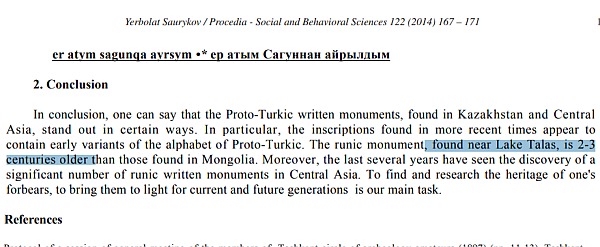itt van konkrétan a forrás arról, amit tagadni szoktál, h a hunok tudtak írni
ahogy mondtam már, fatáblácskákra írtak
Vilhelm Thomsen (1893) connected the script to the reports of Chinese account (Records of the Grand Historian, vol. 110) from a 2nd-century BCE Yan renegade and dignitary named Zhonghang Yue (Chinese: 中行说; pinyin: Zhōngháng Yuè). Yue "taught the Chanyu (rulers of the Xiongnu) to write official letters to the Chinese court on a wooden tablet (simplified Chinese: 牍; traditional Chinese: 牘; pinyin: dú) 31 cm long, and to use a seal and large-sized folder". The same sources tell that when the Xiongnu noted down something or transmitted a message, they made cuts on a piece of wood (gemu). They also mention a "Hu script". At the Noin-Ula burial site and other Hun burial sites in Mongolia and regions north of Lake Baikal, the artifacts displayed over twenty carved characters. Most of these characters are either identical with or very similar to the letters of the Turkic Orkhon script. Turkic inscriptions dating from earlier than the Orkhon inscriptions used about 150 symbols, which may suggest that tamgas first imitated Chinese script and then gradually was refined into an alphabet.
https://languagelog.ldc.upenn.edu/nll/?p=45987
a "vicces" az, h ez már 1893-ban tudott volt...
+
a türk írással kapcsolatban is, az eddig ismert orkhon rovások előtt 2-3 századdal is találtak már leleteket.
(valszeg 2014 körüli a lelet. csak h mennyire abszolútum az amit a tudomány ma tud)
